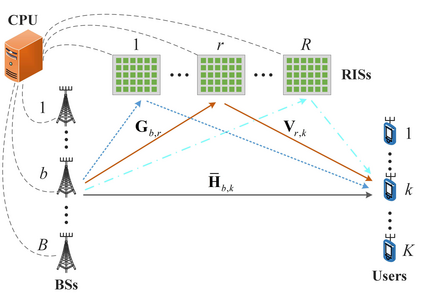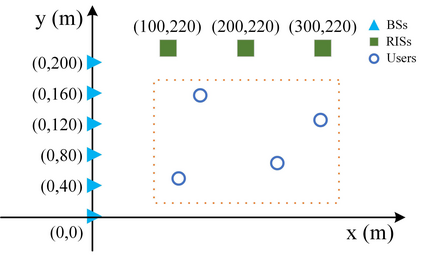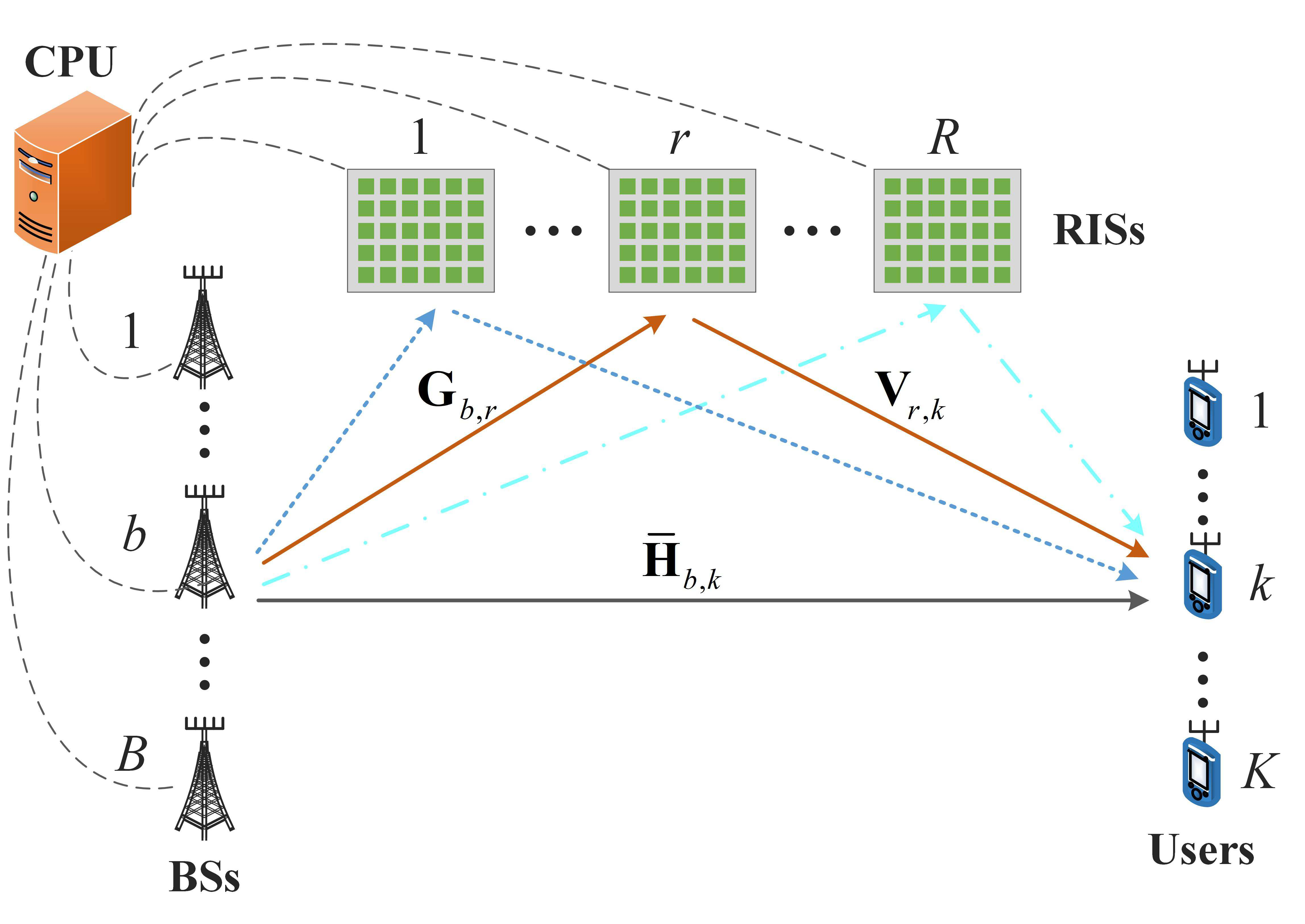The combination of cell-free massive multiple-input multiple-output (CF-mMIMO) and reconfigurable intelligent surface (RIS) is envisioned as a promising paradigm to improve network capacity and enhance coverage capability. However, to reap full benefits of RIS-aided CF-mMIMO, the main challenge is to efficiently design cooperative beamforming (CBF) at base stations (BSs), RISs, and users. Firstly, we investigate the fractional programing to convert the weighted sum-rate (WSR) maximization problem into a tractable optimization problem. Then, the alternating optimization framework is employed to decompose the transformed problem into a sequence of subproblems, i.e., hybrid BF (HBF) at BSs, passive BF at RISs, and combining at users. In particular, the alternating direction method of multipliers algorithm is utilized to solve the HBF subproblem at BSs. Concretely, the analog BF design with unit-modulus constraints is solved by the manifold optimization (MO) while we obtain a closed-form solution to the digital BF design that is essentially a convex least-square problem. Additionally, the passive BF at RISs and the analog combining at users are designed by primal-dual subgradient and MO methods. Moreover, considering heavy communication costs in conventional CF-mMIMO systems, we propose a partially-connected CF-mMIMO (P-CF-mMIMO) framework to decrease the number of connections among BSs and users. To better compromise WSR performance and network costs, we formulate the BS selection problem in the P-CF-mMIMO system as a binary integer quadratic programming (BIQP) problem, and develop a relaxed linear approximation algorithm to handle this BIQP problem. Finally, numerical results demonstrate superiorities of our proposed algorithms over baseline counterparts.
翻译:首先,我们调查了将加权总和(WSR)最大化问题转换成可移植最佳化问题的分数程序。然后,采用交替优化框架将变换的问题分解成子问题序列,即BS的混合BF(HBF),IRIS的被动BF(CF),以及用户的结合。主要挑战是在基站(BSs)、RISS和用户中高效地设计合作波束(CBF)系统。首先,我们调查了将加权总和(WSR)最大化问题转换成一个可移植的最佳优化问题。然后,采用交替优化框架将变换的问题分解成一个子问题序列,即BS(HBBF)的混合BF(HBF),RIS的被动BF(B-M),以及用户的混合组合。特别地,乘以交替方向方法解决了BSSQ的HBF子问题。具体地,用单位-M(M(MO)的模拟BF(M-F)的模型设计和M(O-M-IF(O-IF) IM(M-IL-IL-IL-IF) 的模型的模型的模型的模型的模型的模型的升级)的模型,通过我们设计的模型的模型的模型的模型的模型的模型的模型的模型的模型和模型的模型的模型的模型的模型的模型的模型的模型的模型的模型和模型的模型的模型的模型的模型的模型的模型的模型的模型的模型的计算算算算算算算算算算算算算算算算算算算算算算算算算算算算算算算算算算算算算。





